Multi country payroll in Africa… is both a strategic opportunity and a governance challenge for organisations employing people across the continent. Fragmented systems, shifting statutory rules, and variable data quality can erode trust with employees and authorities. To succeed at scale, leaders need a single way of working that brings consistency without losing the flexibility each market demands. This article explains how a unified control framework makes Multi country payroll in Africa reliable, auditable, and ready to support growth across 40 plus countries.
Why Scale Matters
Payroll touches every colleague, every month. As a business expands into many African markets, the operational load multiplies. Workflows that once lived in spreadsheets or email chains begin to creak. Cut off dates vary, banking rails differ, and approvals can stall. A coherent approach to Multi country payroll in Africa ensures that the same guardrails apply everywhere, so teams can rely on predictable cycles and leaders can see the total cost of labour clearly.
The Risks of Fragmented Operations
Without common controls, Multi country payroll in Africa becomes a patchwork of point solutions. Local teams battle changing tax bands, benefit thresholds, and filing calendars. Head office lacks transparency, and errors may go unnoticed until employees escalate or auditors arrive. The remedy is not to centralise everything, but to clarify who does what, when, and with which tools. That clarity is the heart of a control framework suitable for Payroll in Africa at enterprise scale.
One Control Framework Explained
A control framework sets out the steps from data capture to post pay reconciliation, together with the evidence each step must produce. For Multi country payroll in Africa, the framework should define source system ownership, file formats, validation rules, approval matrices, segregation of duties, and incident handling. It should also set thresholds that trigger root cause analysis, such as variance alerts beyond agreed tolerances. Documented once and applied everywhere, the framework becomes the standard that aligns corporate, regional, and in country teams.
Data, Governance, and Compliance
Trustworthy outcomes depend on trustworthy inputs. Establish a master data standard that spans all employing entities. Use unique identifiers for each worker and each position. Institute maker checker controls for changes to pay elements. For Africa payroll compliance, map statutory requirements market by market and align them with the framework steps, so filings and payments are evidenced and repeatable. When auditors ask for proof, the artefacts are already in the folder, and leadership can demonstrate consistent practice.
Technology That Fits Your Footprint
Many teams try to solve Multi country payroll in Africa with a single monolithic application. In reality, the winning pattern blends a Global payroll platform with curated local engines. The platform orchestrates data, service levels, and workflows, while local processors keep pace with fast moving legislation. The art is integration. Use APIs or flat files where needed, but insist on common validation, standard cut offs, and consistent reconciliation outputs. This is how technology and process work together to provide clarity across markets.
Why Workforce Africa
Choosing the right partner is as important as the right process. Workforce Africa brings regional expertise, vetted in country partners, and a service model aligned to the framework above. Clients gain a single point of accountability across forty plus markets, including support for onboarding, payroll run, statutory filings, treasury, and off cycle adjustments. Because the same governance model applies in each country, our teams resolve issues quickly and provide insights to leadership in a format they can use for decision making. The result is dependable delivery with measurable improvements in timeliness, accuracy, and employee confidence.
Implementation Roadmap
Begin with discovery. Catalogue entities, pay groups, calendars, banking pathways, and statutory obligations. Assess current controls and identify gaps. Next, design the future state of Multi country payroll in Africa, including roles, artefacts, and hand offs. Build a RACI that spans corporate, regional, and in country teams. Configure your Global payroll platform and local processors to the new standards. Pilot with two or three countries to prove the model, then roll out in waves, prioritising markets where risk, complexity, or headcount is highest. Close each wave with a lessons learned review and adjust the framework before moving on.
Operating Rhythm and KPIs
Once live, treat Multi country payroll in Africa as a critical service with clear performance metrics. Track timeliness of inputs, first time approval rates, reconciliation breaks, statutory submission success, out of cycle volumes, and employee ticket themes. Publish a monthly service review that compares markets and recognises where teams are meeting the standard. When deviations occur, your incident process should ensure swift containment, root cause analysis, and preventive actions that flow back into the framework.
Treasury, Tax, and Employee Experience
The framework that supports Multi country payroll in Africa must align treasury with payroll calendars and banking cut offs. Coordinate currency conversion, funding windows, and beneficiary validations so payments land on time. For tax and social security, make certain that filings are accurate and payments are timely, with evidencing stored alongside each run. Meanwhile, employee experience matters. Provide a consistent self service for payslips and year end certificates, with helpdesk routes that are easy to find and staffed by people who understand local context.
Security and Continuity
Protecting sensitive data is non negotiable. Apply role based access, encrypt data in transit and at rest, and use audit trails for all edits. Prepare for disruption by documenting fallback procedures for connectivity loss or local system outages. Test continuity plans each year. When the unexpected happens, the framework keeps Multi country payroll in Africa running and transparent, preserving confidence with staff and stakeholders.
What Success Looks Like
After implementation, leaders report better visibility of total labour cost, fewer surprises at month end, and higher employee satisfaction. The organisation can enter new markets or divest entities without rethinking the basics. With Multi country payroll in Africa running through one control framework, finance and HR can redirect time from firefighting to strategic planning. The operating model becomes resilient, scalable, and ready for growth.
For ongoing insights on labour laws updates, compliance, regulatory awareness, and statutory changes across the continent, follow Workforce Africa’s LinkedIn page.
Workforce Africa partners with ambitious organisations to implement and operate Multi country payroll in Africa with confidence. If you would like to discuss your current setup or explore a new model, Schedule a free consultation.






